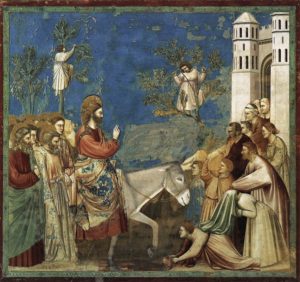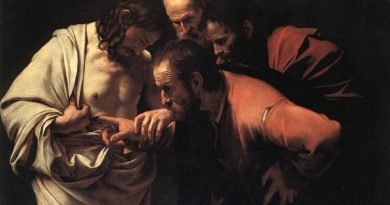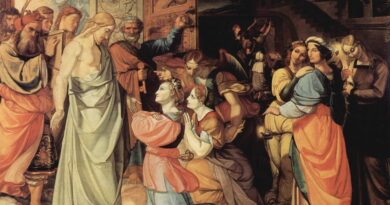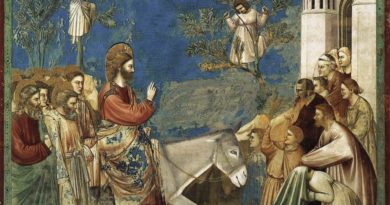Palm Sunday/B
Massimo Palombella

Today’s celebration originated in Jerusalem in the 4th century. In 5th century Rome, Palm Sunday was characterised by the reading of the Lord’s Passion. With the Roman-Germanic Pontifical of the 10th century, the procession became a custom that was consolidated in Rome in the 11th century.
With Palm Sunday the Church leads us into Holy Week, a week called ‘authentic’ in the Ambrosian Liturgy, in the sense of ’eminent’ among all the weeks of the Liturgical Year.
Many characters are sculpted today in the Passion reading, and the same will happen on Good Friday.
In everything that takes shape in the Passion reading, namely the betrayals, the not taking responsibility, the carrying of the cross with Jesus… we find the famous “Gradual” that unites Palm Sunday and Good Friday, where, whatever our attitude in the Passion of the Lord, we are gently reminded that Jesus, for each one of us, became obedient to the point of death, and death on a cross.
The above-mentioned “Gradual” of today’s celebration is taken from chapter two of Paul’s Letter to the Philippians (Phil 2. 8. 9) with the following text:
“Christus factus est pro nobis obœdiens usque ad mortem crucis.
Propter quod et Deus exaltavit illum, et dedit illi nomen, quod est super omne nomen.”
(Christ became obedient for us unto death, even death on a Cross.
Therefore God has highly exalted him, and bestowed on him the name which is above every name).
The attached music, in Gregorian Chant, is taken from the Graduale Triplex published in Solesmes in 1979. The live interpretation is by the Musical Chapel of Milan Cathedral at the Concert held in the Basilica of St John the Baptist in Busto Arsizio on 24 February 2024.
A blessed Sunday and heartfelt greetings.


